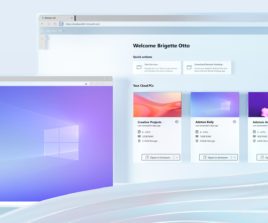Bien que régnant sur Android, Google n’en oublie pas moins de se montrer présent sur d’autres systèmes comme iOS, notamment avec Drive. Mis à jour le 14/03/2017
Drive est le service de stockage en ligne (Cloud) de Google. Tout comme d’autres services comme Dropbox ou encore OneDrive de Microsoft, il permet de stocker tous vos fichiers : photos, vidéos, musiques. L’application permet aussi de lire directement plusieurs formats de documents comme les PDF, feuilles de calculs Excel, textes Doc, etc… En revanche, il faudra passer par les autres applications Google pour modifier ce type de fichiers.
L’offre est donc plutôt intéressante car elle est en cohérence avec le reste des outils Google, à savoir l’éditeur de fichiers, la gestion des contacts et le partage. Démonstration en vidéo ci-dessous :
Au niveau des tarifs, vous commencerez avec 15Go offerts. Il est cependant important de prendre en compte que ce stockage est partagé entre votre compte Drive, mais aussi GMail et Google Photos. Dans ce dernier cas, seules les photos enregistrées en taille originale sont décomptées. Il est ensuite possible d’étendre l’espace de stockage jusqu’à 30 To. Il vous en coûtera alors la somme conséquente de 299.99€/mois ! Il existe bien évidemment d’autres forfaits comme 100 Go pour 1.99€/mois ou 1 To pour 9.99€/mois. Vous pouvez choisir une formule de paiement à l’année si le paiement mensuel ne vous convient pas.
Les avantages de Google Drive
L’ensemble est donc plutôt classique et rejoint ce qui se fait sur d’autres services de stockage dans le nuage. Google Drive offre cependant un logiciel de gestion disponible gratuitement pour PC et Mac. Il suffit d’enregistrer un fichier dans le dossier sur votre Mac et il sera automatiquement visible après quelques minutes (variable selon la taille) sur tous vos autres appareils, iPad ou iPhone.
Un autre gros avantage de Google Drive est sa gestion des partages. Le propriétaire d’un fichier peut donner des droits plus ou moins étendus à un ou plusieurs utilisateurs si il le souhaite. Votre collègue pourra ainsi lire et écrire votre présentation, mais votre patron ne pourra que la lire. Drive apporte donc une dimension collaborative au travail qui s’avère bien pratique. Et si jamais vous devez changer de système d’exploitation entre temps, tout sera synchronisé tant que vous utilisez le même compte Google.
Pour accéder à Google Drive, cliquez ici : https://drive.google.com/start#home
Google Drive s’avère donc bien pratique sur iOS, surtout si vous migrez depuis Android et que vous voulez retrouver tous vos fichiers intacts.





Et quand que cette soi-disant offre utilise des serveurs de stockage aux Etats-Unis accessibles la NSA dans leur intégralité , l’on comprendra qu’il faut à tout prix fuir cette suite bureautique et toujours privilégier un disque dur cryptė dès sa première utilisation. Vous voilà une fois de plus prévenus !